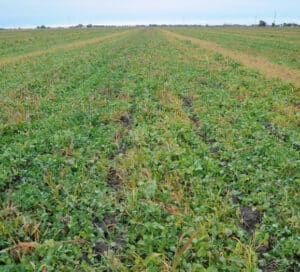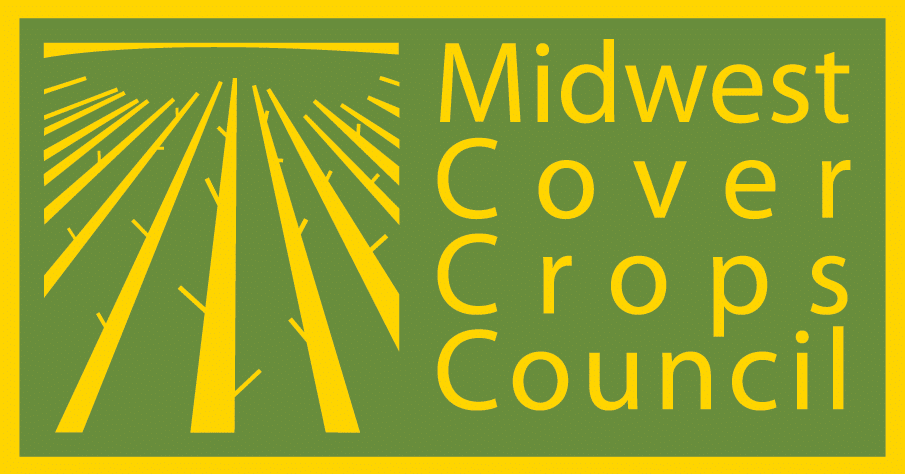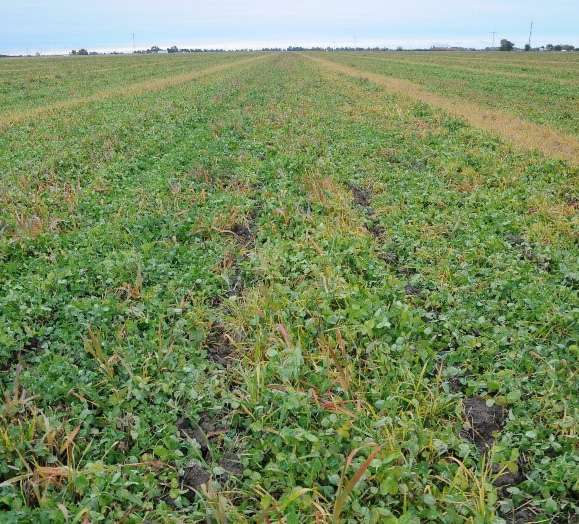Midwest Cover Crops Council (MCCC-127)
University of Guelph (SAG-FS-21-001)
This publication is intended to provide a starting point for farmers who are new to growing cover crops. With experience, farmers may fine-tune the use of cover crops for their systems.
Introduction
The following recipe provides an introductory approach to underseeding a red clover cover crop into winter wheat prior to corn. Adding red clover to a wheat-corn-soybean rotation can improve corn and soybean yields, promote better soil, and provide a nitrogen credit, depending on growth and tillage. With good management, these potential benefits make a red clover cover crop worth investing in.
Planning and Preparation
- Planning—Start small with one field. Prioritize cover crop management based on your goals. Avoid fields with a history of poor drainage, water ponding, or fertility issues.
- Wheat variety and planting—No modifications to wheat variety and planting are required for the successful adoption of a red clover cover crop.
- Winter wheat herbicides—Bromoxynil or MCPA are registered for wheat underseeded with red clover but with specific precautions to avoid injury. See Table 7-3, Herbicide Treatment Rates for Cereals, in Guide to Weed Control: Field Crops (see Resources).
- Tillage or no-tillage—Red clover establishment may be more challenging in no-till systems. In fields with high residue, light tillage prior to wheat planting may improve seed-soil contact and establishment of red clover.
- Fertility or liming—No changes are needed if applying P, K, lime, or manure in the fall before wheat planting.
- Seed purchase—Seed prices can vary depending on the time of year; therefore, it is best to order seeds early. Red clover seed is readily available across Ontario. (See Cover Crop Seed Suppliers in Resources.)
- Variety selection—Ontario growers can choose between double-cut or single-cut varieties, or a mix of both. Single-cut types tend to have less top growth than double-cut types. In thin wheat stands, choose single-cut; otherwise the height of double-cut may pose an issue when combining. Single-cut varieties are slightly more drought tolerant and may be favored in strip-till or no-till systems.
Late-Winter Work
- Planting method and timing—Red clover can be broadcast into winter wheat just before green-up while the ground is still frozen and fields are fit to drive on. The freeze-thaw action will work the seeds into the ground. (See Underseeding Red Clover into Winter Wheat in Resources.)
- Seeding rate for red clover—Broadcast red clover at a rate of 7–9 lbs/acre. For more information, see Agronomy Guide for Field Crops (in Resources).
Summer Work
- Scouting—Look for red clover plants to have about 5 leaves during late May before the dry summer period.
- Wheat harvest—Harvest wheat at the normal time. The red clover will continue growing until terminated.

Post-Wheat Harvest Work
- Evaluating a clover stand—The goal is a uniform stand of at least 3 to 4 plants per square foot. Clover stands may seem to disappear under hot and dry conditions immediately before wheat harvest but will often recover within one to two weeks.
- Filling in patches—If red clover stands are inconsistent (Figure 1), red clover or crimson clover can either be drilled or broadcast into gaps. Alternatively, forage pea, an oat-pea mix or an oat-radish mix (see After Wheat, Going to Corn or Soybean in Resources) can be planted to suppress weeds.
- Mowing—Scout and clip or mow the field before common ragweed or other weeds go to seed (Figure 1).
- Termination—Significant root mass accumulates in the month of October, so it is best to delay termination as late as possible. There are two main methods:
- Herbicide—Terminate red clover in the fall when it is actively growing and herbicides are most effective. Spring termination is less successful. (See page 5 of the Guide to Weed Control: Field Crops.)
- Tillage—Red clover can be terminated using a moldboard plow in the fall or spring. Some growers do not plow and will follow up their herbicide termination with some tillage, but disc ripping will not effectively terminate red clover on its own.
Spring Work
- Fertilizer—The nitrogen application rate to corn can be reduced by 73 lbs/acre for plowed clover and by 60 lbs/acre in a no-till system. (See page 24 of the Agronomy Guide for Field Crops.)
- Corn planting—Check planting depth and seed furrow closure shortly after beginning to plant into the cover crop residue as usually some adjustments are needed.
- Scouting—After corn planting, scout for crop emergence and population. Slug damage may occur if the clover was not tilled. Additionally, scout for red clover escapes and weeds since cover crop residue can often delay the emergence of annual weeds, which may delay the application of any post-emergence herbicides.
Resources
Cover Crop Selector Tool — available from Midwest Cover Crops Council
Guide to Weed Control: Field Crops (OMAFRA publication 75A)
Cover Crop Seed Suppliers (OMAFRA)
Underseeding Red Clover into Winter Wheat (Field Crop News, OMAFRA)
Agronomy Guide for Field Crops (OMAFRA publication 811)
After Wheat, Going to Corn or Soybean: Use an Oat-Radish Mix (Ontario Cover Crop Recipe Series, MCCC-128/SAG-FS-21-002)—available from Midwest Cover Crops Council, Cover Crop Recipes
Fall Control of a Red Clover Cover Crop (Field Crop News, OMAFRA)
Authors
Jordan Grigg, Cameron Ogilvie, and Laura Van Eerd, University of Guelph; Anne Verhallen, OMAFRA (Note: This publication was adapted with consent from MCCC under a joint project to produce customized introductory guidance about cover crops for all member states/provinces.)
Reviewers and Contributors
Joanna Follings, OMAFRA; David Hooker, University of Guelph; Tatianna Lozier, Upper Thames River Conservation Authority; Anne Vanasse, Université Laval; Marty Vermey, Grain Farmers of Ontario
The Midwest Cover Crops Council (www.https://www.midwestcovercrops.org) aims to facilitate widespread adoption of cover crops throughout the U.S. Midwest and Ontario by providing educational/outreach resources and programs, conducting new research, and communicating about cover crops to the public.
Funding for this project was provided by McKnight Foundation.
July 2021
The U.S. Department of Agriculture (USDA) prohibits discrimination in all its programs and activities on the basis of race, color, national origin, age, disability, and where applicable, sex, marital status, familial status, parental status, religion, sexual orientation, genetic information, political beliefs, reprisal, or because all or a part of an individual’s income is derived from any public assistance program. (Not all prohibited bases apply to all programs.) Persons with disabilities who require alternative means for communication of program information (Braille, large print, audiotape, etc.) should contact USDA’s TARGET Center at (202) 720-2600 (voice and TDD). To file a complaint of discrimination write to USDA, Director, Office of Civil Rights, 1400 Independence Avenue, S.W., Washington, D.C. 20250-9410 or call (800) 795-3272 (voice) or (202) 720-6382 (TDD). USDA is an equal opportunity provider and employer. ©2021 by MCCC. All rights reserved.

